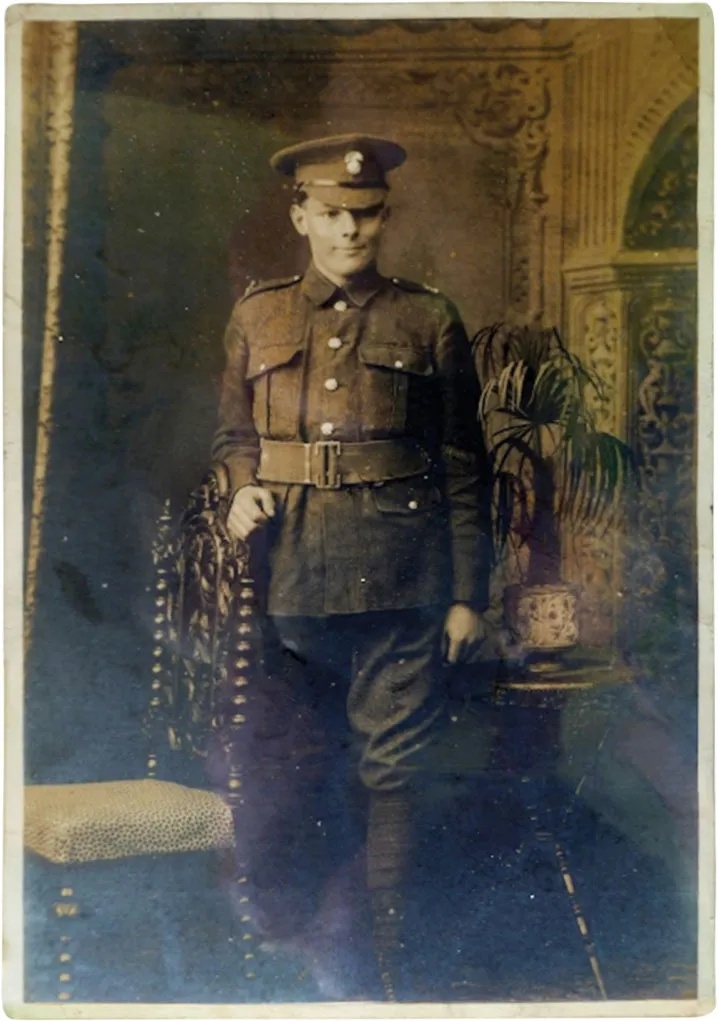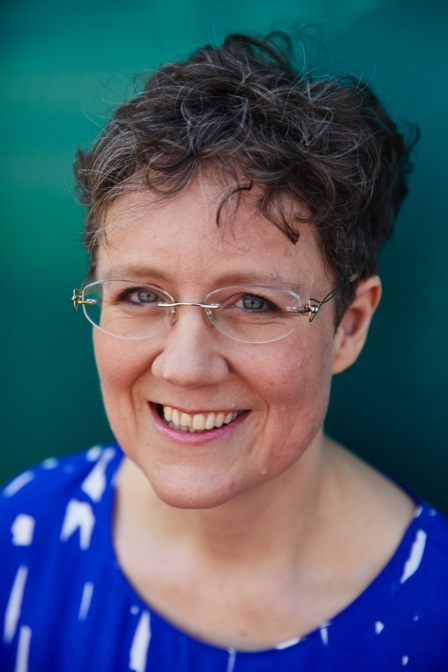I’d like to know which regiment my grandfather, John Wedderburn, served with during the First World War. I know where he lived in Northumberland, and that he fought at Passchendaele, but none of the records I’ve found seems to confirm any of this information. I have two photographs of him taken during the First World War, one with him seated with others (see above) and one of him on his own (see below). Is it possible to work out his regiment from them?
Peta McCauley

Without a service record, it can be difficult to trace what a soldier ancestor did in the First World War. There are only four Wedderburns with Medal Index Cards, but with the aid of these photographs, it is possible to piece together something of your grandfather’s service.
There’s only one John Wedderburn with a Medal Index Card including service with the Northumberland Fusiliers and the Royal Irish Regiment. It shows he was first in the Northumberland Fusiliers (number 43280), then the Leinster Regiment (15185), then the Royal Irish Regiment (40914) and finally the Royal Engineers (615978). Neither the card, nor John’s medal roll (on ancestry.co.uk) names the battalions he served in.
Transfers between units often occurred after a man was wounded. The websites thegenealogist.co.uk and forces-war-records.co.uk show John was reported wounded on 28 August 1917 while serving with the Leinsters, and it’s probable that, after a spell in hospital, he was transferred to the Royal Irish Regiment. He may have moved to the Royal Engineers later as he was a signaller.
Given that John served in two Irish regiments consecutively, it seems most likely that he was with one of the Irish divisions – the 10th (Irish) Division or the 16th (Irish) Division) – in 1917 and 1918.
- In the photograph with John on his own, his cap still has its stiffener round the top, suggesting this is early in John’s service.
- The cap badge is the Northumberland Fusiliers, and features an old-fashioned hand grenade (fusil) and lit fuse burning above. It encloses a motif of St George slaying the dragon.
- The background is a professional set, so this was probably taken in the UK in a local photographer’s studio. In contrast the group photograph is taken in front of a much cheaper background, possibly in France.
- In the group photograph, the men have removed their cap stiffeners and generally look less formal, so this is likely to be a later photo.
- John's cap badge in the group photograph has a large crown above a tall emblem with a scroll below, and a prominent scroll loop underneath. This signifies the Royal Irish Regiment.
- The crossed-flag badge on John's left sleeve means he is now a trained signaller.
Phil Tomaselli is a military family history expert and author of Tracing your Air Force Ancestors

